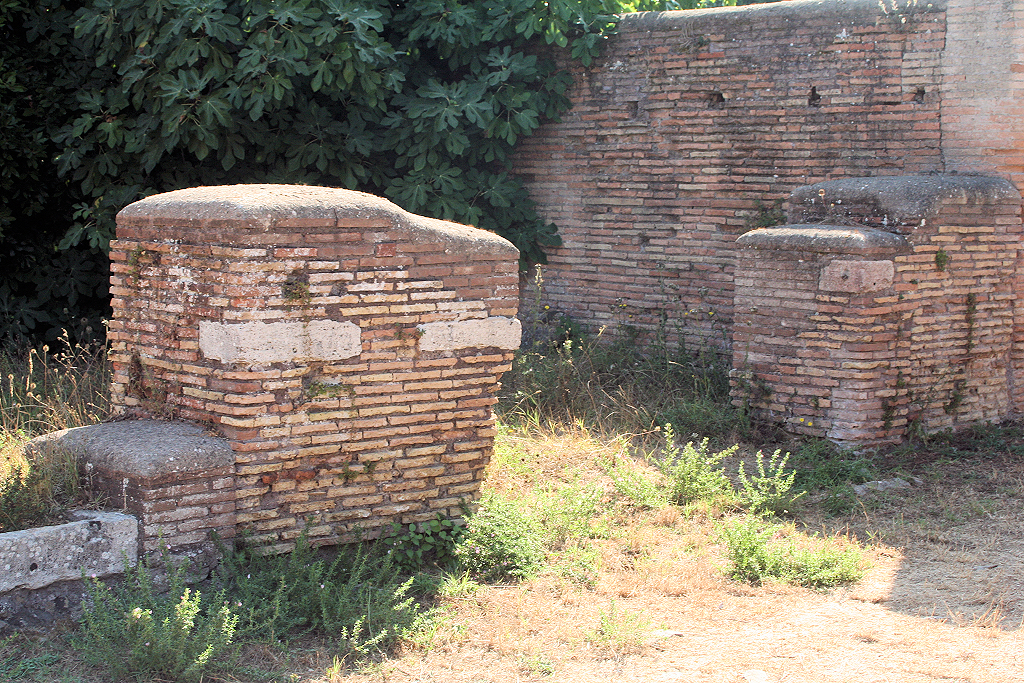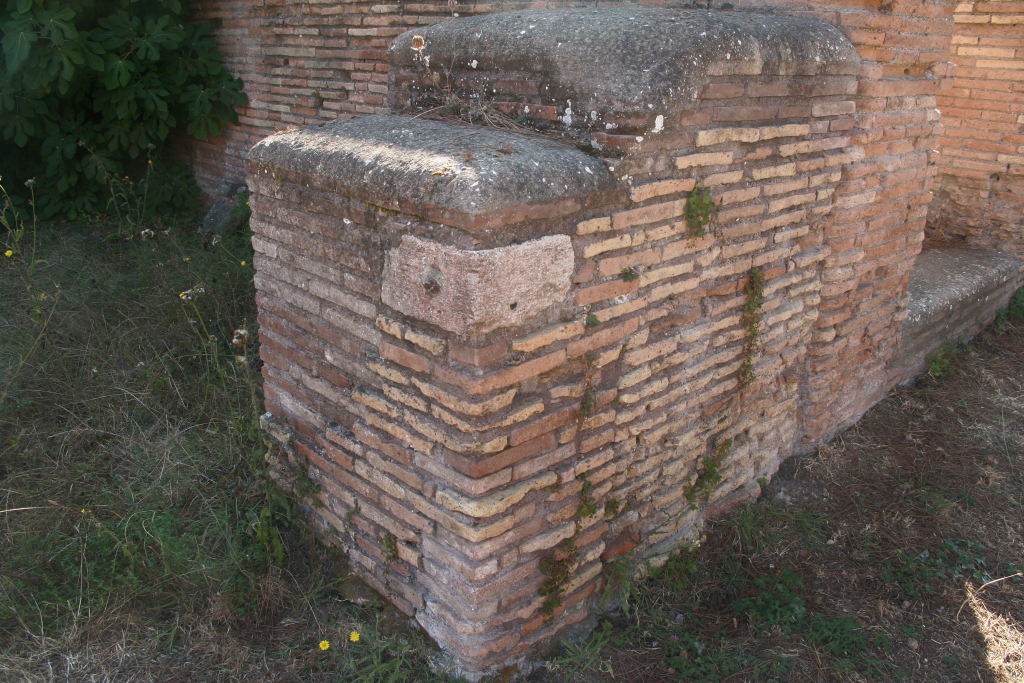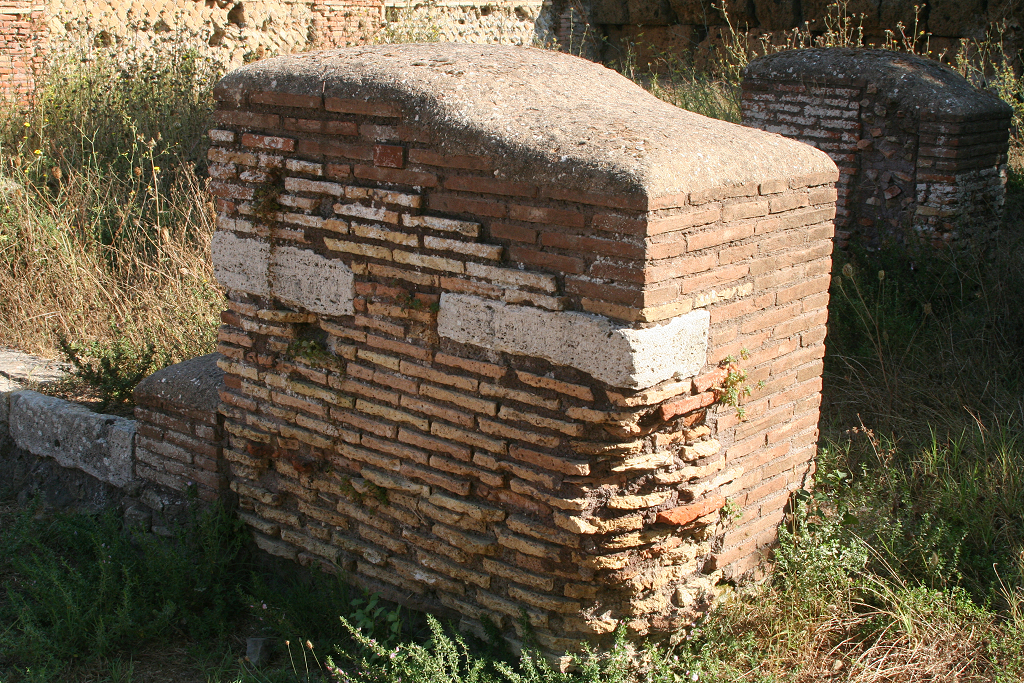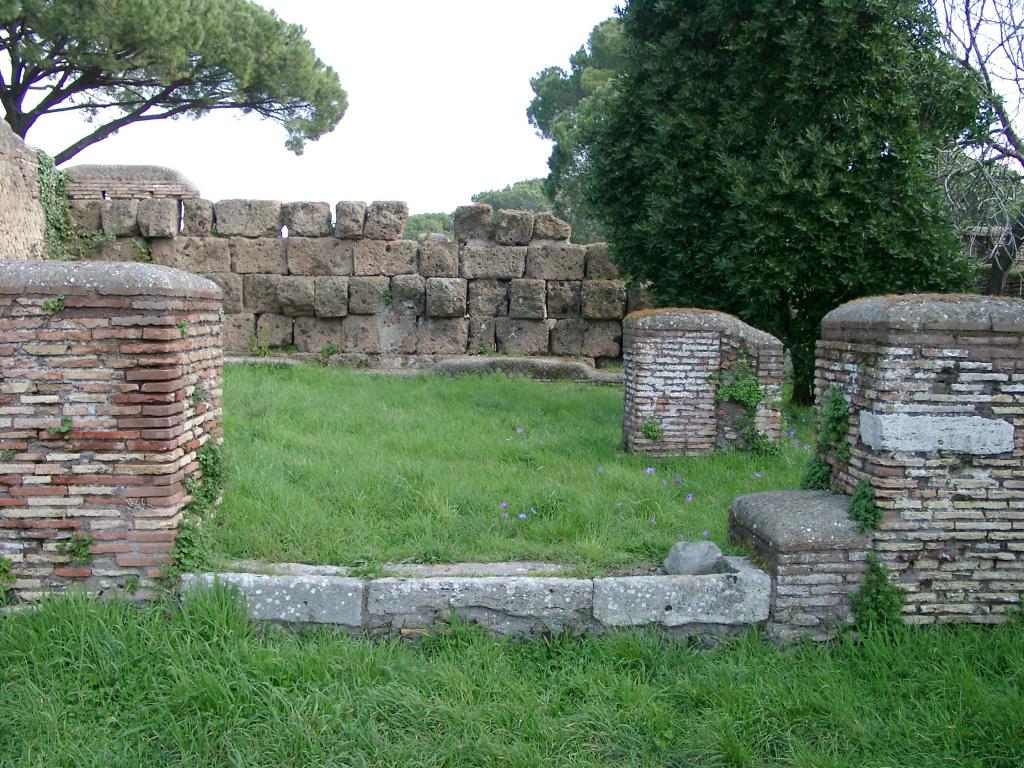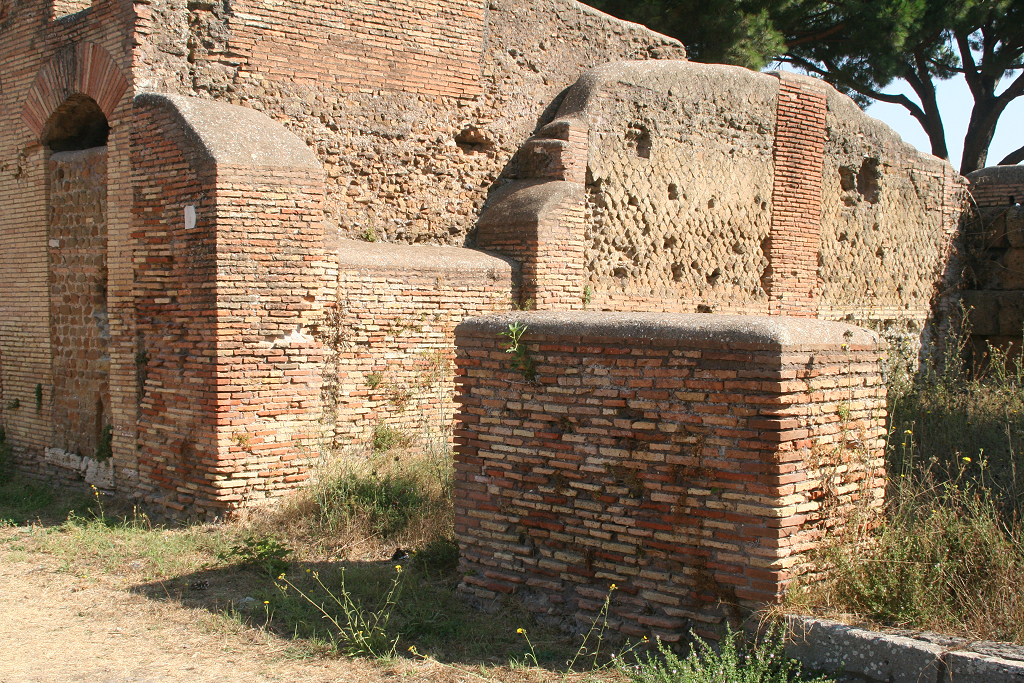|
| The building |
| Description and function |
This is a large hall in the western part of the insula. It was entered from the west, from Via dei Lari, through three entrances, the central one of which has a shop threshold, at the south end set against a secondary masonry pier. Presumably the hall had a commercial function. |
| Date |
The hall was built during the reign of Hadrian (opus latericium). |
|
Nr. 100
|
| Description |
Nr. 100 is a cornerstone in the west facade, in the north jamb of the southernmost pier, a cornerpier. There is a more or less round hole with metal in the inside (north side) (diam. c. 0.05). The lower part of the metal is more or less round (diam. c. 0.03) and is most likely iron. The upper part seems to be a lead plug. The stone is reddish, as if it was once painted red. Possibly the function of the stone was thus cancelled. |
| Date |
The plan in SO I, modern masonry and a joint in the lower part of the west side of the wall suggest that it is in an ancient extension of the pier. There is modern masonry around the stone and it is not enclosed by ancient masonry. It cannot be excluded that it was found on the ground and placed here by the excavators. |
| Measurements |
Nr. 100 starts at a h. of 0.82. Meas. according to VdM: l. 0.27, w. 0.30, h. 0.16. |
|
Nrs. 101-102
|
| Description |
Nrs. 101 and 102 are cornerstones in the west facade, in the north and south jamb of the pier to the north of the pier with nr. 100. Only the lower part of this pier has been preserved, so it remains unknown whether there were stones higher up. There are no stones in the pier further to the north and in the northern cornerpier. The sides of these piers have been somewhat restored, but it seems that if stones were there, they should have been preserved. |
| Date |
The two stones are in Hadrianic masonry. |
| Measurements |
Nrs. 101 and 102 both start at a h. of 0.77. Meas. according to VdM: l. 0.59 and 0.59, w. 0.29 and 0.26, h. 0.14 and 0.15. The measurements falsely suggest that vertically there is overlap between 100, and 101-102. That is not the case however, nr. 100 is at a slightly greater height. The masonry above the stone in the southern jamb of the central pier is partly modern, but a counterpart of 100 on top of it should have been preserved it seems. |
| Remarks |
I suggest that a rope was attached to nr. 100. The other stone to which the rope was attached was apparently at a higher level. It has not been preserved.
It may be noted that the pier with stones 101-102 is opposite the door with stones 103-104. So we have stones in the south-east and south-west corner of Piazza dei Lari.
|
|

Plan of the block. After SO I.
|

